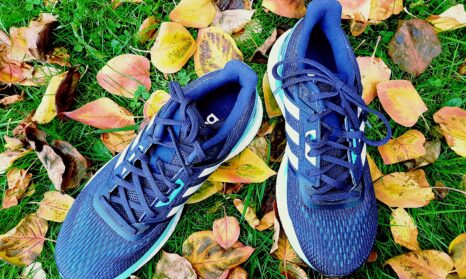Using circular thinking to decode eight sustainable businesses
There are lots of businesses making claims about being sustainable these days and the current trend is to go all out and make a big bold claim about how circular your business is - Ikea, P&G, Unilever to name a few in 2017 already.
In my blog six simple features of circular business models explained, I explored how businesses were starting to use circular thinking into their innovation process to rethink their products, services and ultimately business models and outlined our approach to decoding this through our 'Six features of circular economy business models matrix'.
In this blog, we are going to examine the circular credentials of eight businesses from well-known global brands and ethical companies to innovative start-ups and disrupters, covering products and services we use daily.
Using our features of circular economy business models matrix, I have looked at these business to explore how they have applied circular thinking to make their business more sustainable, and ultimately (I hope) help to solve some of the big sustainability challenges we face globally.
Why we love them
Patagonia is the outdoor clothing manufacturer which famously told customers not to buy their clothes on Black Friday in 2011. They have incorporated many aspects of circular thinking into their business. From addressing chemical use in their materials, to making durable and repairable products, and encouraging their customers to make use of their repair service, or reuse and recycle items through their Worn Wear programme.
Circular thinking features: Circular value chain; collection & recycling; durable products; repair services
Why we love them
Using plant derived and low toxicity ingredients this is more than just your “eco-friendly” cleaning products brand. Splosh has set out to disrupt how we buy our cleaning products. Customers first buy a starter pack containing well-designed bottles and add sachets of concentrated liquid and tap water to make up the product. The bottles can be used repeatedly, with refill sachets delivered by post. Some sachets dissolve completely in the reusable bottle, others can be posted back to to be reused again and again.
Circular thinking features: Circular value chain; collection and recycling, personalisation & lock in.
Why we love them
It is great to see such a global brand championing circular thinking. They have created their own material named Nike Grind, made from recycled trainers, plastic bottles and off-cuts from the manufacturing process and it is used in over 71% of their range. They also offer a personalised, made to order option.
Circular thinking features: Circular value chain; recycling, collection & industrial symbiosis; personalisation & made to order
Why we love them
In the Philips pay-per-lux model, Philips installs, maintains and upgrades the lighting system, maintaining responsibility for reusing/recycling the equipment. The customer pays a flat service fee for the lease of the lighting system and energy usage of a specified time period. This model has been successfully trailed with high profile clients.
Features: Circular value chain; recycling & collection; product service system.
Why we love them
Liftshare is the UK’s largest car sharing community. The platform enables people to easily share their journeys, either through finding a driver or someone to share their own planned journey. Liftshare also works with corporate clients including big names like JLR, Diageo, National Grid. During the recent week long Southern Rail strike, more people registered trips between Brighton and London than in the whole of 2015.
Circular thinking features: Collaborative/sharing economy and dematerialised services
Why we love them
ECOR is an advanced sustainable building and design material designed to be 100% recycled and recyclable, completely non-toxic and 100% certified bio-based. Made from waste cellulose fibre, heat and pressure (by that we mean waste cardboard, paper etc.). It can be used as an alternative for traditional wood, plywood, corrugated cardboard and plastics. ECOR is already successfully replacing traditional wood-based and plastic materials in many applications including graphics/signage, packaging, construction, architecture and design, furniture, fixtures and consumer products.
Circular thinking features: Circular value chain; recovery & collection including industrial symbiosis
Why we love them
A subsidiary of GDiapers - a cradle to cradle certified nappy, GCycle is a new service that includes a 100% compostable nappy/diaper which allows childcare centres to divert around 80% of their waste stream (food waste and nappy waste) from landfill to valuable compost. By replacing the oil-based polypropylene plastic that makes up 80% of a nappy with non-GMO corn starch, the product can be composted. This creates an additional revenue source for childcare centres.
Circular thinking features: Circular value chain; recovery & collection including industrial symbiosis; modularity & lock-in
Why we love them:
Designed by XD Design the Boom Eco Mug is completely recycled and cradle to cradle certified. No glue is used during the production process, it has been made in a modular fashion and designed for disassembly with each individual part having a symbol to explain how it can be recycled. XD Design have a 2020 Vision to become a 100% sustainable manufacturing company and the Boom Eco Mug is one of several sustainable products in their range.
Circular thinking features: Circular value chain; recovery & collection including industrial symbiosis; modularity
I hope that it won’t be long before it’s harder to do business with an “unsustainable businesses” than it is to work with one that is on the road to becoming circular.
Each of the business featured above is taking at least one aspect of circular thinking and applying it to their product or service development to make their business more circular. From longer lasting shoes and clothes made with less chemicals and more recycled content to non-toxic cleaning products that you can refill via mail-order and building materials made with absolutely no chemicals, companies are finding innovative ways to get the same great results without the expected negatives.
Other businesses are addressing what seem like intractable problems, such as the frightening levels of waste created by our need for convenience. This is at the root of our reliance on disposable nappies and our obsession with ‘coffee on the go’. Others are challenging us even more, by selling us “light” rather than lightbulbs or taking us away from our love affair with our own cars by enticing us to be like James Corden running our own carpool Karaoke!
If you want some more inspiration on what other leading circular businesses and governments are doing then check out the winners of the 2017 Circular Awards. I hope that it won’t be long before it’s harder to do business with an “unsustainable businesses” than it is to work with one that is on the road to becoming circular.
Learn more about how we can help your business with circular thinking.
The circular economy: cracking the challenge
The circular economy is one of the biggest challenges - yet most exciting opportunities - for today's businesses. This guide will help your business get started, and explain the benefits of embracing the circular economy
Download PDF







